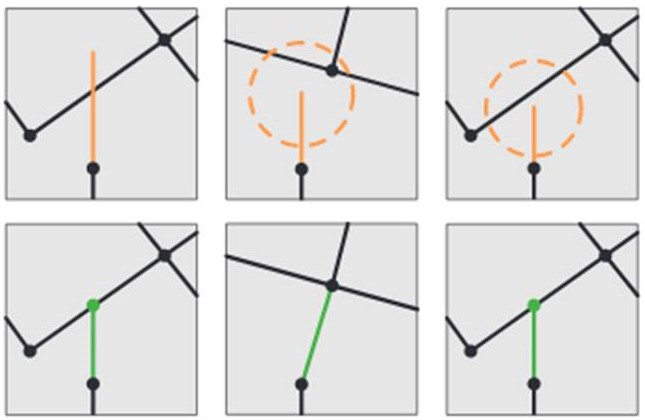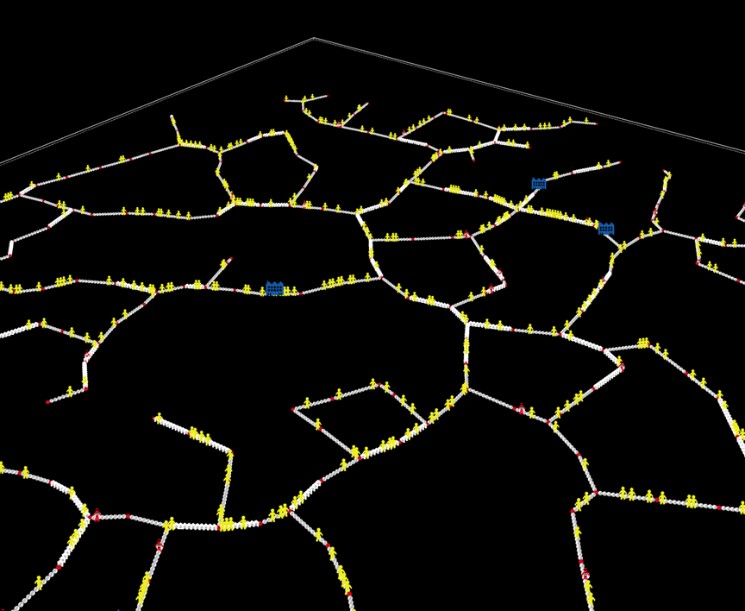Procedural environment generation for agent-based models of crime
Jack Lewis, Dr Dan Birks, Dr Toby Davies - University of Leeds. This work was supported by Wave 1 of The UKRI Strategic Priorities Fund under the EPSRC Grant EP/T001569/1, particularly the “Digital Twins: Urban Analytics” theme within that grant & The Alan Turing Institute.
Exploring how procedural algorithms can be used to generate realistic, synthetic street networks for use in agent-based models of crime pattern formation.
Urban morphologies, such as patterns of land usage and street network configurations, fundamentally shape day-to-day activities in complex and non-linear ways, dictating where, when, and in what contexts individuals interact with one another. As a result of difficulties associated with the empirical investigation of these interactions, scholars in recent years have applied agent-based models to study the relationship between urban morphology and offender-victim space time behaviour.
Project aims
This project uses existing and develops new, techniques for procedural environment generation to build virtual environments that can be incorporated into existing agent-based models of crime. The project aims are to design and implement computational tools for automatically generating realistic, manipulable built environment models. These tools will be integrated into existing agent-based models of victimisation that seek to explore how street networks influence the behaviour and interactions of potential offenders, victims and crime preventers.
Explaining the science
In recent years, researchers have built simulation models to try to better understand how crime patterns emerge from the interactions of individuals. Simulations have been constructed to assess the impact of street network configurations on crime risk. These models address questions such as - is it safer to live on a cul-de-sac or a through-street? In this area, two distinct approaches have been taken – situating simulations in (1) abstract but malleable environments or (2) real-world static environments drawn from GIS data. This project explores a third alternative, using spatial analyses and graph theoretic approaches researchers write algorithms that ‘grow’ realistic synthetic street networks. These environments are combined with existing models of crime to conduct controlled simulation experiments which forecast the impacts of varying street network characteristics on offending.
Methods
Street generation focuses on 3 main rules:

1 - If two streets intersect: generate a crossing
2 - If end is close to an existing crossing: extend the street to reach the crossing
3 - If end is close to intersecting: extend street to form intersection.
Results
Preliminary experiments show that synthetically generated environments offer considerable promise for those interested in how street networks influence the interactions of people and places - in this case, potential victims, offenders, and crime preventers.

Simulating crime interactions on a synthetic street network.
